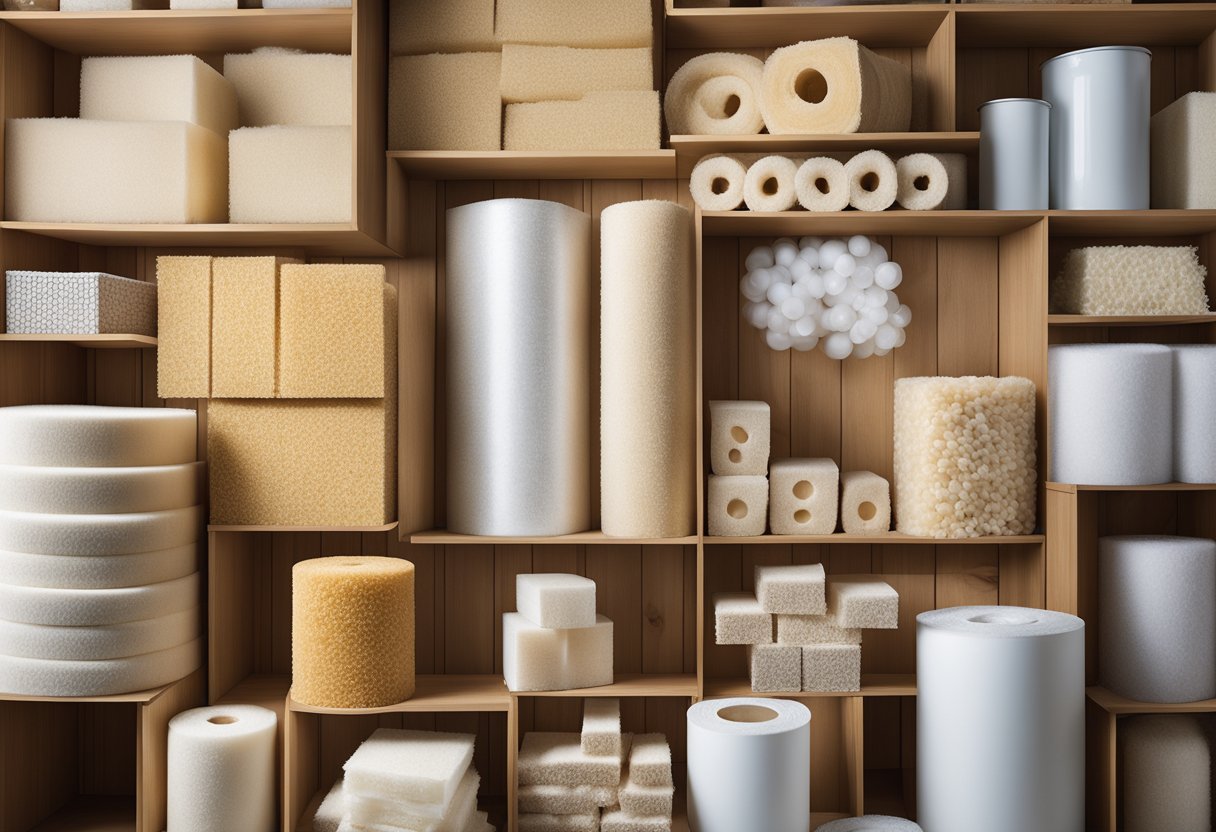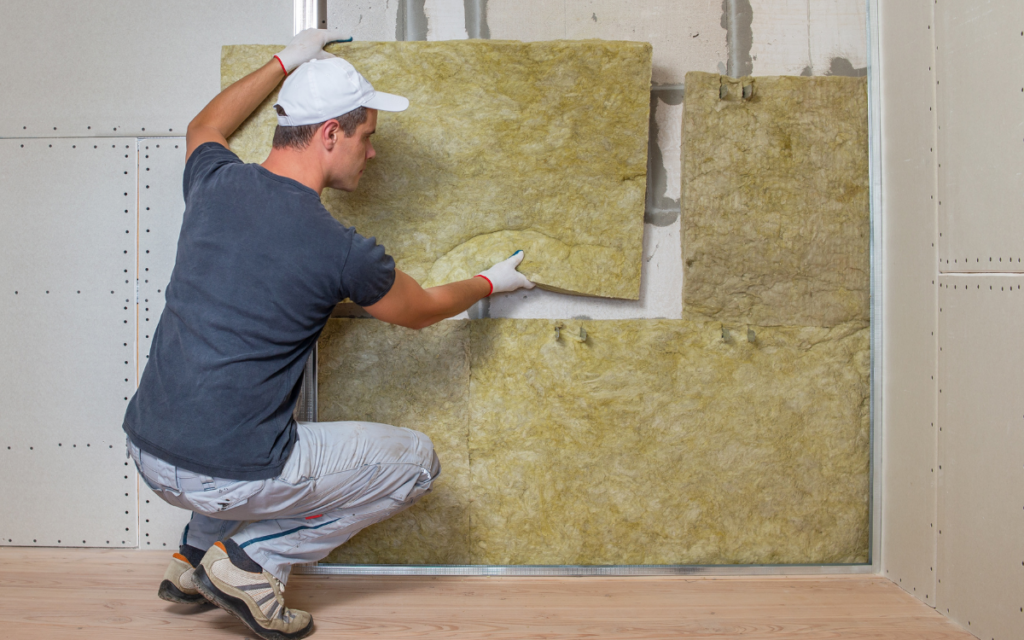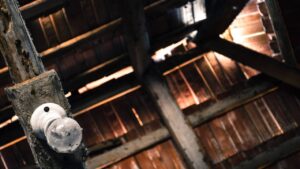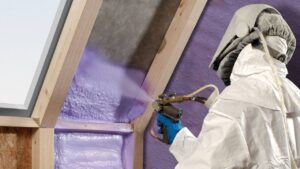Different Types of Wall Insulation
Installing wall insulation in your home is one of the best ways to increase the warmth and comfort of your home. We lose up to 30% of our heat through poorly insulated walls. The insulation will increase the heat retention ability of your walls, keeping your home warmer for longer, and reducing your energy usage and bills.
Wall insulation is an essential feature of a home that serves multiple functions: it retains heat during the colder months, helps to keep the home cool during the warmer periods, and can lead to significant savings on energy bills. With energy efficiency in mind, homeowners are increasingly turning their attention to the types of wall insulation options available as a means to improve thermal performance and reduce energy consumption.
The types of wall insulation commonly found in homes vary and can be categorised broadly into three main types: cavity walls, solid walls, and hollow block walls. Cavity wall insulation is designed for homes with two layers of walls that have a gap or ‘cavity’ between them, while solid wall insulation is applicable to homes with walls made from a single solid layer. Hollow block walls, found in some properties, also provide a unique set of challenges and opportunities for insulation.
Each insulation type is further divided into subcategories, including internal wall insulation, cavity wall insulation, and external wall insulation. Choosing the right type depends on several factors, such as the period the home was built, existing wall structure, and the homeowner’s budget and energy efficiency goals. Proper insulation not only facilitates a more comfortable living environment but also contributes to lower heating costs over time, making it a worthy consideration for any homeowner looking to upgrade their property.
Types and Applications of Wall Insulation
The efficacy of a home’s thermal performance significantly depends on the type of wall insulation chosen. Homeowners must understand the different forms available and select the appropriate one that aligns with the construction type and goals of their home’s energy efficiency enhancements.
Cavity Wall Insulation
Cavity walls consist of two layers of brick or block with a hollow space between them. Cavity wall insulation is designed to fill the gap, reducing heat loss and improving energy efficiency. It is typically suitable for homes built after the 1940s when cavity walls became standard. Materials commonly used include mineral wool, polystyrene beads, or foam insulants, each imparting specific thermal properties and suitability.
Solid Wall Insulation
Solid wall insulation applies to walls with no cavity space, often found in homes built before the 1920s. They are typically insulated either internally or externally. For solid walls, insulation options include rigid insulation boards or a stud wall filled with insulation material such as mineral wool or foam. While external insulation can alter the appearance of the property, internal insulation may reduce room size slightly but is often the preferred method when exterior aesthetics need to remain unchanged.
Internal Wall Insulation
Internal wall insulation involves the application of insulation to the internal surfaces of external walls. This can involve either rigid insulation boards or a timber/metal frame filled with insulating material and then plasterboarded over. Internal wall insulation can be an effective method for insulating solid walls, but it will slightly reduce the floor space and requires skirting boards, door frames, and electrical fittings to be adjusted.
External Wall Insulation
External wall insulation involves fixing a layer of insulation material to the outside of the home, which is then covered with render, cladding, or decorative boards. This method not only insulates but can also revamp the building’s exterior appearance. External wall insulation is suitable for both solid and cavity walls where traditional cavity filling is not possible or desired. It also preserves the internal living space and minimises internal disruption during installation.
Insulation Materials and Properties

This section explores various materials used in wall insulation along with their distinct properties, providing homeowners with insights to make informed decisions.
Fibreglass Insulation
Fibreglass insulation, composed of extremely fine glass fibres, is one of the most prevalent forms of insulation found in homes today. It comes in rolls or batts and has the advantage of being both cost-effective and easy to install. Its thermal resistance or R-value per inch ranges from 2.9 to 3.8, making it a practical option for many applications.
Mineral Wool and Rockwool Insulation
Mineral wool insulation includes materials like rock wool and slag wool. They are known for their fire resistance and acoustic properties. Rock wool, a type of mineral wool, is created by spinning molten rock and minerals with other components into fibre materials. These fibres are then formed into rolls, batts, or loose-fill insulation.
Foam Insulation
Foam insulation encompasses a variety of materials including polystyrene, polyisocyanurate (polyiso), and polyurethane. Two common types of rigid insulation boards from this category are expanded polystyrene (EPS) and extruded polystyrene (XPS). EPS is noted for its versatility and cost-effectiveness, while XPS offers higher thermal insulation properties. Foam insulation can be sprayed or fitted as rigid boards, providing a continuous layer of insulation.
Natural and Sustainable Options
For those seeking eco-friendly alternatives, natural and sustainable insulation types are available. Materials like sheep’s wool, cellulose, which is made from recycled paper and other fibres, and boards made from phenolic or polyethylene foams offer lower environmental impact. Sheep’s wool, for instance, is a renewable material that not only insulates but also manages moisture effectively.
Energy Performance and Cost Effectiveness

When selecting wall insulation, homeowners and builders must consider the balance between initial costs and the long-term energy savings it can provide. The right insulation improves energy efficiency and can be cost-effective by reducing heating bills, offering long-term savings and taking advantage of various grants and incentives.
Enhancing Energy Efficiency
The R-value of an insulation material signifies its thermal resistance, with higher R-values representing greater insulation capacity. Insulation with a high R-value is more effective in preventing heat loss in winter and heat gains in summer, thereby maintaining a consistent indoor temperature. In turn, this leads to less energy required to heat or cool a building, thus directly improving its energy efficiency.
Reducing Heating Bills
Properly insulated walls can significantly reduce heating bills by lowering the demand on heating systems. Internal wall insulation, for instance, can cost around £7,500 for a typical 3-bedroom semi-detached house in Britain and can lead to substantial savings on energy bills by minimising thermal bridging and heat loss.
Long-term Savings
Long-term savings are realised through reduced energy consumption after the initial investment in insulation. Even though external wall insulation may cost more upfront, approximately £12,000, it provides durable weather resistance and, over time, pays back through lower energy costs. Materials such as rock or slag-based insulations tend to be more cost-effective in regions with colder climates due to their superior thermal properties.
Grants and Incentives
Homeowners may offset insulation costs through grants and incentives offered by various programmes. In the UK, schemes like the SEAI (Sustainable Energy Authority of Ireland) provide support for insulation upgrades, emphasising the importance of improving buildings’ energy ratings and the National Criteria for Energy Performance.
By focusing on both the energy performance and the cost effectiveness of wall insulation, individuals and businesses can make informed decisions that not only save money but also contribute to a more energy-efficient future.
Installation Techniques and Considerations
Effective installation of wall insulation is key to maximising energy efficiency and ensuring that the intended benefits are realised. This section will explain the various methods and considerations that must be taken into account when approaching wall insulation.
Professional Installation vs DIY
Professional installation by a qualified contractor is recommended for most types of wall insulation, as it ensures that the materials are installed correctly and safely. DIY insulation can be more cost-effective for simpler installations, such as loft insulation, but it’s imperative to have a good understanding of building science to avoid mistakes that could lead to poor insulation performance or moisture problems.
Assessing Home Insulation Needs
Before installation, a detailed assessment of a home’s insulation needs is crucial. This includes determining the appropriate depth of insulation materials to be used, which can affect the thermal properties of a wall. Additionally, understanding the layout of joists, ducts, and potential gaps in a timber frame structure is key for effectively insulating a detached house or any other dwelling.
Meeting Building Regulations
Compliance with local building regulations is essential when installing insulation. These regulations dictate minimum standards for energy efficiency and will influence the type and depth of insulation required, how air barriers and vapour barriers are to be incorporated, and how to address air leaks. Professional installers will be up to date with these requirements, ensuring that heat loss is minimised.
Dealing with Damp and Draught
Managing damp and draught is an integral part of installing wall insulation. Properly sealing any air leaks and ensuring a continuous air barrier are fundamental steps to prevent moisture intrusion and the associated issues. Ventilation should also be considered to maintain indoor air quality while reducing greenhouse gas emissions and the property’s carbon footprint.
Emerging Insulation Technologies and Trends

The insulation industry is continuously innovating to meet the demands for energy efficiency and reduced greenhouse gas emissions. One notable advancement is the development of spray foam insulation. This form is applied as a liquid that expands to fill the cavities in walls, creating an airtight barrier. Its ability to be foamed-in-place makes it a versatile option for homes, particularly in irregular spaces where traditional insulation rolls might not fit.
Sprayed insulation technologies are becoming more sophisticated, with improvements in both application methods and the insulation material itself. Such advancements often aim at optimising thermal insulation to keep homes warm in the winter and cool in the summer, without an excessive energy cost.
Another emerging practice involves adopting structural insulated panels (SIPs), a high-efficiency alternative to conventional construction techniques. These panels feature an insulating foam core sandwiched between two structural layers, delivering superior thermal efficiency that can notably decrease expenses associated with heating and cooling.
For an environmentally friendly approach, there’s a growing interest in materials that minimise greenhouse gas emissions during their production. The construction industry has seen rigid insulation boards that incorporate environmentally-responsible materials. These can greatly enhance a building’s energy efficiency, which is essential in the drive towards greener building practices.
Finally, blown-in insulation, where materials such as fibreglass or cellulose are blown into wall cavities, is an established technique enjoying renewed interest thanks to technological improvements. It offers a customizable solution that can be more cost-effective than other options, potentially reducing the financial barrier to improving a home’s insulation.
Frequently Asked Questions
Wall insulation is a critical component in maximising a building’s energy efficiency and thermal comfort. Different materials and techniques suit various types of wall structures. This section seeks to address some of the common queries regarding wall insulation types and practices.
Which insulation materials are most effective for thermal performance in walls?
Materials such as expanded polystyrene, mineral wool, and polyurethane foam are known for their high thermal resistance and are effective for wall insulation. The choice of material often depends on the specific properties of the wall and the desired energy efficiency.
How should one determine the appropriate insulation for small or confined spaces within walls?
In confined spaces, materials that can be injected or blown in, such as foam insulation, can provide an effective solution. They fill irregular cavities and gaps, ensuring there are no uninsulated pockets which could compromise thermal performance.
What are the advantages and disadvantages of using fibreglass insulation in wall structures?
Fibreglass insulation is commonly used due to its cost-effectiveness and ease of installation. It offers good thermal performance; however, it can lose effectiveness if it becomes damp and can be irritating to the skin during installation.
Could you provide a comparison of loose fill and foam board insulation for wall applications?
Loose fill insulation, typically made of materials like cellulose or fibreglass, is effective for filling cavities in existing walls. Foam board insulation provides a higher R-value per inch than loose fill and can be used in both new construction and retrofit projects, but it often requires more precise installation.
Which wall insulation solutions are considered the most cost-efficient over time?
Insulation solutions that offer high durability and longevity, such as foam board or dense-packed cellulose, can be more cost-efficient over time by maintaining their insulating properties and reducing the need for replacement or top-ups.
What considerations should be made when selecting insulation for homes in colder climates, such as Ireland?
In colder climates, higher insulation values are required to retain heat. Moisture resistance and the ability to prevent thermal bridging should be key considerations, as walls are exposed to greater environmental stress and need to minimise heat loss effectively.
Usher Insulation Dublin
Usher Insulations is one of the most established home insulation companies in Dublin. We offer a range of wall insulation materials to suit every home and property type. With over 30 years of experience, our expert team has hand-selected our insulation products based on their ease of application, high quality, and competitive pricing. We are available for external wall insulation, cavity wall insulation, and internal wall insulation projects throughout Dublin. For more information contact our team today on 018201921.


